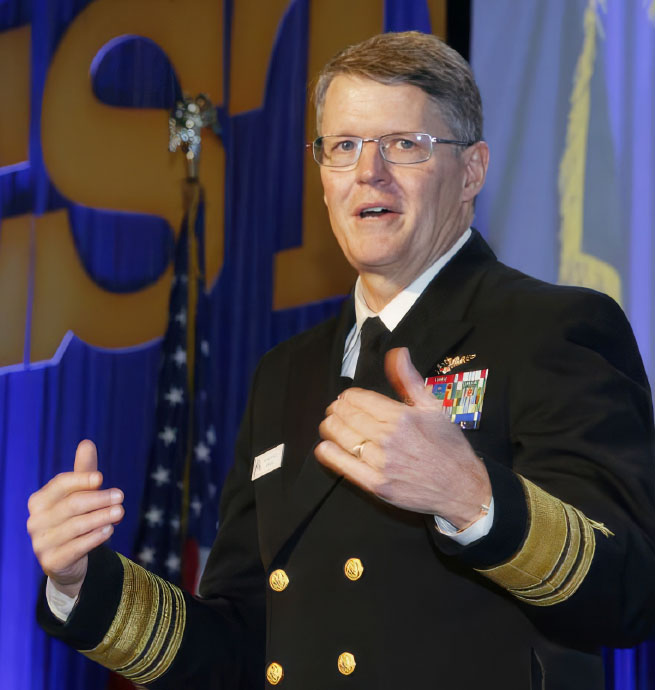
Navigating Technological Frontiers
A Conversation with Vice Admiral Frank Morley, Principal Military Deputy Assistant Secretary of the Navy for Research, Development, and Acquisition
By Michael J. Keegan
Editors Note: Since this interview, VADM Morley retired from military service.
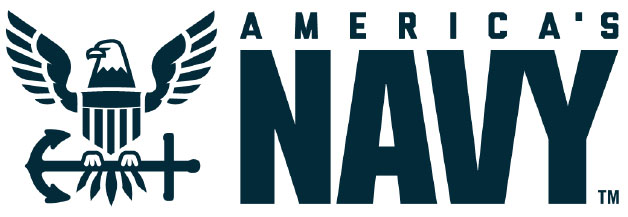
The mission of the Office of the Assistant Secretary of the Navy for Research, Development and Acquisition (RDA) is to provide weapons, systems, and platforms for the U.S. Navy/Marine Corps that support their missions and give them a technological edge over our adversaries. The assistant secretary establishes policies and procedures and manages the Navy’s RDA activities in accordance with Department of Defense (DoD) 5000 Series Directives.
I had the pleasure of hosting Vice Admiral Frank Morley, the principal military deputy assistant secretary of the Navy for Research, Development and Acquisition (RDA) as my guest on The Business of Government Hour. We delved into the strategic initiatives and challenges facing the U.S. Navy. As the senior uniformed acquisition officer, Vice Admiral Morley plays a pivotal role in steering the Navy’s modernization efforts. The following highlights key themes from our discussion, which focuses on the Navy’s approach to maintaining a technological edge and ensuring operational readiness in an ever-evolving threat landscape.
On the Mission of the Assistant Secretary of the Navy for RDA
Vice Admiral Morley provided a comprehensive overview of the mission and organizational structure of the RDA office. This office is essentially the cradle-to-grave steward of the Navy’s material needs. It manages the research, development to the procurement, production, and sustainment of the Navy and Marine Corps’ vast array of assets, including ships, aircraft, and submarines.
Morley emphasized the importance of his role in bridging the gap between the secretary and the service staff. This is crucial for translating operational requirements into actionable acquisition strategies and ensuring alignment with broader Department of Defense priorities.

On Addressing Strategic Challenges
During our conversation, we discussed some of the core strategic challenges facing the service in the area of acquisition.
1. Expanding the industrial base: One of the foremost challenges highlighted by Morley is the state of the defense industrial base. Over the past few decades, the defense industry has contracted significantly, driven by the post-Cold War environment where the perceived threat level was lower. This has shifted with the rise of near-peer competitors. This contraction has impacted the capacity for scaling up production, when necessary, as seen in efforts to increase submarine and munitions production.
Morley discussed the long lead times and the need for steady investments to strengthen the supply chains, particularly for critical components that extend down to third-, fourth-, and fifth-tier suppliers. This expansion is vital for supporting the Navy’s goal to ramp up production and meet current and future operational demands. “We’ve expanded the industrial base over the past few years to ensure that we’ve got the capacity and the resilience to support our needs. . . . It’s about making sure that we have enough suppliers and enough capacity to meet the demand, especially in times of crisis or conflict,” VADM Morley explains.
2. Leveraging technological advancements: The rapid pace of technological advancement, especially in software-driven systems, presents both opportunities and challenges. Morley spoke about the Navy’s need to improve its ability to quickly integrate commercially available technologies into operational platforms. This requires a shift in acquisition processes to accommodate faster tech insertion and deployment.
The Navy is increasingly focusing on model-based systems engineering and digital design tools to manage the complexity of modern systems. These tools help streamline the development process and enhance the Navy’s ability to build and deploy more mature systems more efficiently. “Certainly, we’re going to see more of that hybrid fleet of manned and unmanned teaming. . . . We’re also looking at high-energy non-kinetic solutions, like lasers and microwave systems, which will start to come in more as we aim for greater flexibility and cost-effective defense of our systems,” the vice admiral points out.
3. Bending the cost and time curve: Morley also addressed the ongoing effort to reduce the cost and development time for new systems. Traditional systems engineering processes, which have served well since the ballistic missile developments of the 1950s, are becoming less effective in the face of modern, highly software-dependent systems. The Navy is adopting new tools and methods, such as model-based testing and evaluation, to shorten development timelines and reduce costs while maintaining high standards of operational readiness. “Today we see,” describes VADM Morley, "tools are maturing mostly in the form of model-based systems engineering, digital design, digital manufacturing, model-based testing and evaluation. These tools are now mature enough to shorten the timeline for that development [test, and deployment cycle.]"
On the Evolving Acquisition Strategies
To stay ahead in the rapidly changing landscape of modern warfare and technological advancements, the Navy’s acquisition strategies are continuously evolving. Morley discussed how the Navy is adapting its processes to be more agile andresponsive to the demands of contemporary and future combat scenarios.
Key to this evolution is the integration of advanced technologies and the enhancement of digital tools that support the Navy’s operational and strategic goals. By focusing on these areas, the Navy aims to ensure that it can maintain its technological superiority and provide sailors and Marines with the best possible resources to execute their missions.
The Navy’s approach is characterized by a balance between continuity and necessary adjustments. The current chief ofnaval operations (CNO), Admiral Franchetti, builds on the initiatives of her predecessor, Admiral Gilday. The strategy focuses on long-term goals rather than rapid changes, recognizing the Navy’s role as a large and steady-moving entity. The strategic aim is towards expansion (“getting bigger”) and increasing readiness, rather than fixating on specific ship counts. This broad, directional focus is driven by multiple studies indicating the need for growth.
“Readiness is the cornerstone of everything that we do, and so making sure that we have our forces ready to respond to any potential threat or crisis is absolutely critical.”
Vice Admiral Frank Morley
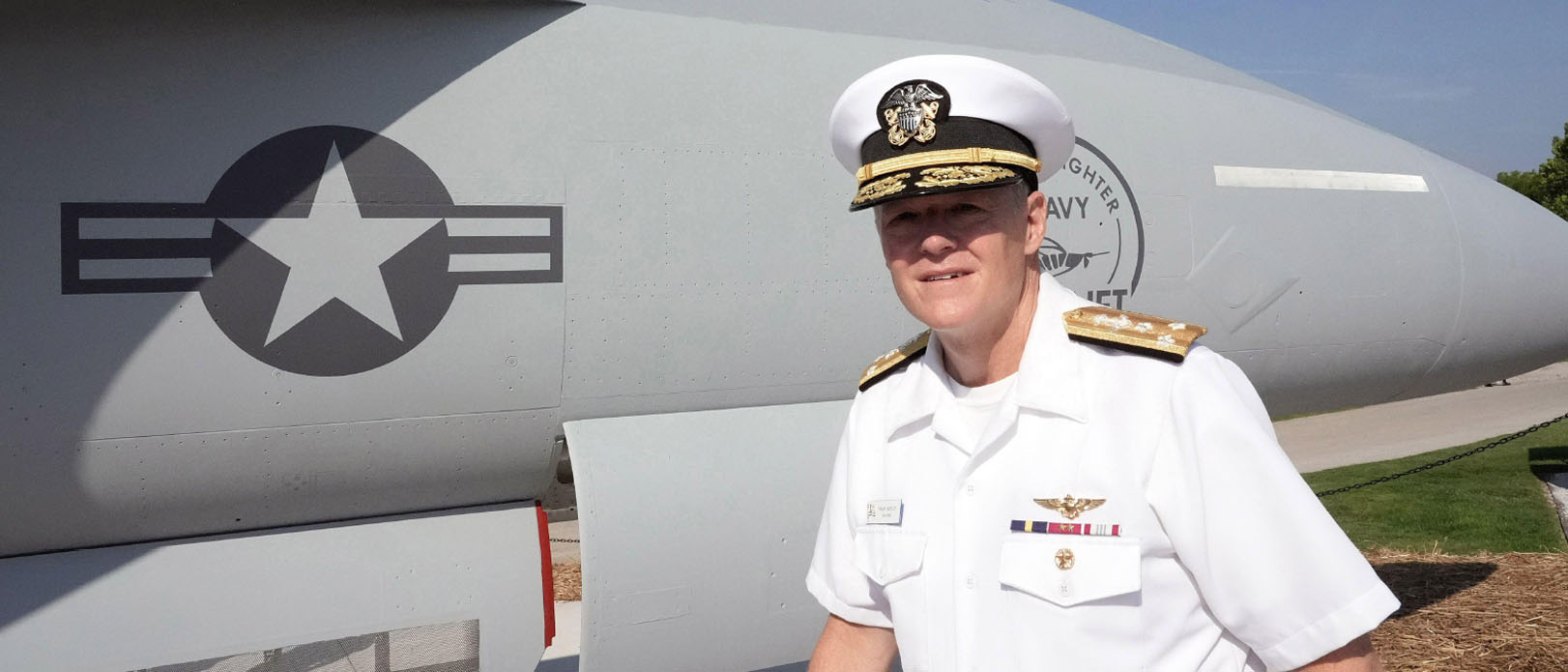
On Key Strategic Priorities
VADM Morley identified a set of key strategic priorities outlined below:
Nuclear deterrence: Reconstitution of the nuclear deterrent force, particularly through the Columbia-class submarine, is paramount. “The nuclear deterrence and the posture that we have with our strategic forces is a very, very important element,” acknowledges VADM Morley, “and we have to ensure we have the proper posture to deter any potential adversaries.”
Readiness: Emphasis on improving the operational readiness of current assets, ensuring more ships and equipment are available and operational. “Readiness is the cornerstone of everything that we do, and so making sure that we have our forces ready to respond to any potential threat or crisis is absolutely critical,” he explains.
Capability and capacity development: Investments in enhancing technological capabilities and expanding fleet capacity, with a significant focus on integrating emerging technologies from the commercial sector. “Expanding our capability and capacity is a key focus area, as it directly impacts our ability to maintain a competitive edge and respond to various challenges,” VADM Morley adds. “We need to ensure that we not only have the right capabilities but also the capacity to deploy them as needed.”
Hybrid fleet development: Moving towards a more hybrid fleet, incorporating both manned and unmanned systems in the air and at sea, is critical. The vice admiral notes, “A hybrid fleet gives us the flexibility to adapt to different operational environments and requirements, enhancing our overall strategic posture.”
On Shaping the Navy’s Strategic Vision for Acquisition
We also discussed the trends and drivers that influence and shape the Navy’s strategic vision for acquisition and development.
China as the pacing threat: China is identified as the primary strategic competitor, guiding much of the Navy’s focus on preparedness. However, the Navy also maintains readiness for a variety of global missions beyond direct conflict scenarios, including deterrence and maintaining international maritime communication lines.
Economic and infrastructure vulnerabilities: Recognizing the vulnerabilities in the U.S.’s open economy, the Navy is addressing economic threats that could impact its supply chains and operational readiness. This includes monitoring and mitigating risks from foreign ownership of critical companies and protecting technological advancements from espionage and cyber threats.
On the Maritime Economic Deterrence Executive Council
The Council aims to address and mitigate economic threats by coordinating efforts within the Navy and with other entities. It consolidates various initiatives under a single umbrella to strengthen the Navy’s economic defenses. This includes monitoring foreign investments in key industries (such as through CFIUS, the Committee on Foreign Investment in the United States), safeguarding science and technology (S&T) and research and development (R&D) efforts, and protecting against counterfeit parts and cyber threats.
By bringing together different efforts within the Navy and collaborating with external entities like the Air Force and Indo- Pacific Command, the Council enhances the Navy’s capability to identify and respond to economic threats. The Council’s initiatives also support broader governmental strategies for economic deterrence, contributing to the national dialogue on protecting economic interests and supply chains.
“We’re working very closely with the Maritime Economic Deterrence Executive Council,” VADM Morley explains. “We stand up for how we protect those key components, those key segments of the economy. We work closely with the interagency community and through DoD to make sure we’re playing our part to protect that economic base, and it’s all of it—it’s undersea cables, it’s key shipping lanes, its key choke points, all those things that the Navy traditionally does.”
On Improving Acquisition Processes
We discussed the following elements to improve acquisition processes:
Flexibility and tailoring: The Navy’s acquisition process is designed to be adaptable, allowing program managers to tailor their approaches to specific needs rather than following a rigid script. This flexibility is formalized through multiple acquisition pathways, as outlined in the DoD’s policy. “Ellen Lord, the former Under Secretary of Defense for Acquisition and Sustainment (A&S), did a really good job in revising DoD Instruction (DoDI) 5000.02, which restructures defense acquisition guidance to improve process effectiveness and implement the Adaptive Acquisition Framework (AAF). . . . It provided an opportunity for program managers to tailor what they’re bringing along and not try to follow a single script. You need to be flexible. You need to understand what the needs are. You need to think, don’t just follow,” admits VADM Morley.
Rapid prototyping and deployment: Efforts such as the Mid-Tier Acquisition (MTA) pathway enable faster development and deployment of technologies, particularly those with manageable technical risks and lower capital expenses. These pathways allow for more agile responses to emerging needs without extensive bureaucratic delays. “MTA was created . . . as a way to, within five years, try to bring either a prototyping of something or actually field something and take away some of the requirements,” explains VADM Morley.
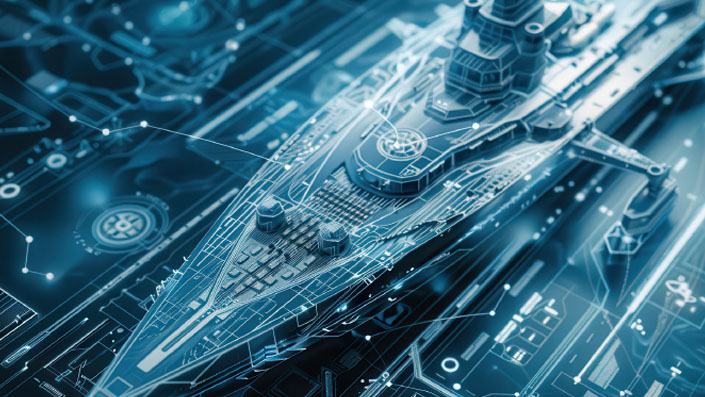
Bridging Organizations: Various bridging organizations (like the Defense Innovation Unit, AFWERX, and NavalX) are designed to accelerate the integration of commercially developed technologies into military applications. These organizations focus on quickly delivering solutions that address operational challenges. They operate under a model that emphasizes the rapid insertion of mature technologies into deployable systems, bridging the gap between commercial innovation and military application. “We see a series of bridging organizations created . . . to really address the seam in our normal structure . . . and get that thing into something deployable in the operators’ hands in a relatively rapid fashion,” says VADM Morley.
On Supply Chain Resiliency
The U.S. Navy is also actively working to strengthen its supply chain resilience by securing access to critical technologies and materials. This includes protecting the supply chain from economic and cybersecurity threats and ensuring the integrity of the components used in Navy systems. Measures to enhance supply chain resilience include increasing domestic production capabilities, diversifying suppliers, and implementing rigorous monitoring and control mechanisms to prevent vulnerabilities. The Navy also collaborates with other branches and government agencies to identify and mitigate potential threats to its supply chain, ensuring it can sustain and develop critical technologies effectively.
“Supply chains pose a significant challenge. We streamlined our supply chain during the downsizing of the industrial base, prioritizing efficiency and cost. Surprisingly, when tracing the suppliers for an aircraft, up to 80 percent could be singlesource suppliers. Often, these are small, family-run businesses at the lower tiers. This lack of visibility and reliance on few suppliers complicates our operations,” notes VADM Morley.

To understand supply chain management better, VADM Morley spent a few days with General Motors. Despite their sophisticated operations and just-in-time supply chain management, they, too, encounter fuzzy visibility beyond the second or third tier. In the Navy, they need to tackle this uncertainty by focusing on known issues. “For example, in munitions,” he explains, “we’ve been taking risks for decades but now face a significant demand. We need a deliberate, sequential approach to address this, which will gradually improve our industrial base over several years.”
VADM Morley notes that they started about a year and a half ago by signaling the Navy’s commitment to industry through multiyear contracts, increasing budget submissions, and investing in organic capabilities. The Navy also identified critical supply chain constraints, like rocket motors and specific chips, which impact multiple weapons systems across services. By targeting these known shortfalls with focused funding, the Navy can start to address these constraints effectively.
To truly expand the industrial base, he noted the need for the U.S. government to maintain consistent support over several years. This will enable the free enterprise system to respond to the market needs, gearing up production as they see a sustained demand.
On Modernizing the Fleet
Modernization is crucial and generally takes the form of evolutionary rather than revolutionary development. Evolutionary upgrades carry lower technical risks, offering more reliable schedules and costs, while delivering new capabilities quicker. “Our modern systems, heavily driven by software, are well-suited for continuous upgrades. Whether it’s platforms like the F-18 or F-35, or our weapon systems, we push significant capability enhancements through software updates,” admits VADM Morley. “For instance, improving weapon lethality can significantly boost the effectiveness of existing platforms. We’re also exploring new tools like digital twins, which can speed up the deployment of new capabilities.”
On Navigating the Complexities of Technological Integration
As the U.S. Navy looks to the future, the integration of advanced technologies such as unmanned systems, hypersonic weapons, and high-energy non-kinetic solutions becomes increasingly critical. Morley envisions a hybrid fleet where manned and unmanned systems operate in tandem across air, sea, and undersea domains.
This strategic shift is aimed at enhancing the Navy’s operational flexibility, expanding its reach, and presenting multiple axes of potential threat to adversaries. The introduction of hypersonic weapons and long-range strike capabilities further underscores the Navy’s commitment to maintaining a technological edge. These advancements promise to significantly extend the range and lethality of naval forces, enabling them to project power and respond to threats more effectively. Additionally, the exploration of high-energy non-kinetic solutions reflects a broader trend towards diversifying defensive capabilities and improving cost-effectiveness in missile defense and other critical areas.
Integrating unmanned systems: The future of naval operations involves a hybrid force combining manned and unmanned systems. This is essential for addressing the vast engagement zones and modern near-peer threats the nation faces. Unmanned systems help extend the operational reach and provide additional capabilities without risking human lives. In the air domain, unmanned systems can serve as tankers or advance further into contested zones, launching long-range weapons. This layered approach enhances our tactical flexibility. Undersea, there are various classified applications, while on the surface, unmanned systems can serve as sensors or force multipliers, providing coverage and reducing the risk to manned platforms.
The Navy strategy follows a phased approach outlined by the U.S. Department of Defense, focusing first on experimentation and prototyping. “As we move into the next fiscal planning periods, we will establish these technologies as programs of record, aiming to achieve significant deployment in the subsequent fit-ups. Currently, we’re in the latter stages of this initial phase, with considerable prototyping and concept of operations (CONOPS) development. In a few years, we anticipate formalizing these systems into operational roles,” notes VADM Morley.
Integrating emerging technologies: “Our ships, despite their space and power limitations, are generally better suited than aircraft for integrating new hardware technologies. For example, we’re enhancing our Littoral Combat Ships (LCS) with newer missile systems to increase their lethality. Hypersonic technologies are crucial for addressing the long-range engagement challenges we face, allowing us to deliver mass on target rapidly. We’re targeting specific platforms for these capabilities,” describes VADM Morley. In non-kinetic defense, high-energy alternatives like lasers and microwave systems are promising but face technical hurdles, such as generating sufficient power. “We have already deployed a laser defense system and are installing a prototype microwave system to understand its operational viability,” VADM Morley notes. “Our goal is to extend the range and effectiveness of these systems beyond terminal defense to provide more robust, layered defense options.”
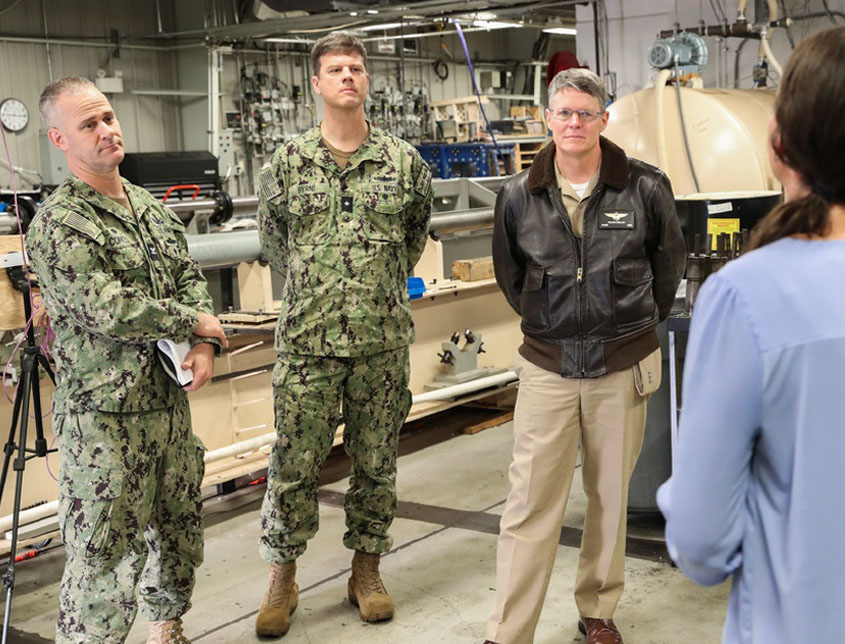
On Embracing a Culture of Continuous
Improvement and Innovation
At the heart of the U.S. Navy’s approach to maintaining and enhancing its capabilities is a commitment to continuous improvement and innovation. Morley’s “Get Real, Get Better” initiative epitomizes this ethos, advocating for a cultural revolution that focuses on rigorous accountability and sustained performance improvements. This initiative encourages all stakeholders, from shipyards to acquisition teams, to engage in a unified effort to identify inefficiencies, streamline processes, and adopt best practices from world-class performance standards.
The admiral highlights the integration of advanced data analytics and predictive maintenance as pivotal to this effort. By leveraging the vast amounts of data generated by sensors embedded in ships and aircraft, the Navy can anticipate maintenance needs, reduce downtime, and enhance the overall readiness of its fleet. This predictive approach not only optimizes operational efficiency but also extends the life cycle of naval assets, ensuring that they remain combat-ready and technologically relevant in the face of evolving threats. “We put a big effort into [predictive maintenance]. We started collecting the data, measuring our performance, and started to gain real measurable benefits from that. And then we’ve now scaled that across multiple type model series aircraft and then more of the surface fleet and the submarine fleet,” explains Morley.
On Ensuring Robust Maintenance and Sustainment
Effective life cycle management of Navy assets is another cornerstone of Morley’s vision. He details the Navy’s comprehensive approach to sustainment, which involves not only maintaining existing capabilities but also modernizing and upgrading them to meet future challenges. This approach encompasses everything from routine maintenance and repair to the digitization of shipyard operations and the implementation of sophisticated IT systems that enhance logistical efficiency.
Morley points out that the U.S. Navy is actively working to reduce inefficiencies in shipyard operations, drawing lessons from the highly optimized processes used in aircraft production. By minimizing non-value-added activities and ensuring that workers have immediate access to the tools and materials they need, the Navy aims to increase the time spent on productive tasks and reduce overall maintenance times. This focus on operational efficiency is crucial in a context where readiness and rapid deployment can be the difference between success and failure.
On the Ethical and Inspirational Dimensions of Military Service
Beyond the operational and technological aspects, Morley offers profound insights into the ethical and motivational dimensions of military service. He describes service to the nation as a “high calling” that offers deep personal fulfillment and a sense of contributing to something larger than oneself. This perspective is not just about duty but also about finding joy and purpose in one’s work, a theme that resonates with many who have served in the military. Morley advises those considering a career in public service to seek roles that they find genuinely interesting and fulfilling. He encourages a broad exploration of opportunities early on, suggesting that a diverse range of experiences can lead to greater success and satisfaction. This advice underscores the importance of passion and commitment in achieving longterm career goals and making meaningful contributions to national security.
On the Mission of the Assistant Secretary of the Navy for Research, Development and Acquisition
Vice Admiral Morley provided a comprehensive overview of the mission and organizational structure of the RDA office. This office is essentially the cradle-to-grave steward of the Navy’s material needs. It manages the research, development to the procurement, production, and sustainment of the Navy and Marine Corps’ vast array of assets, including ships, aircraft, and submarines.
Morley emphasized the importance of his role in bridging the gap between the secretary and the service staff. This is crucial for translating operational requirements into actionable acquisition strategies and ensuring alignment with broader Department of Defense priorities.
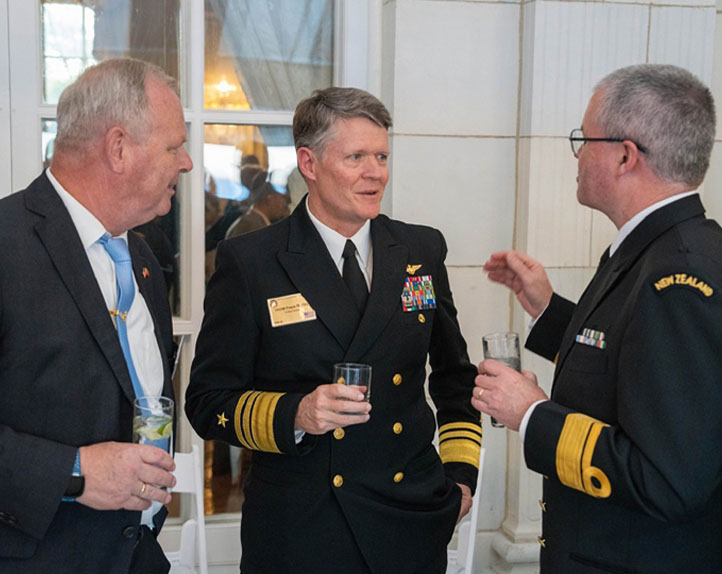
Resources
To learn more about the Air Force Research Laboratory, go to navy.mil.
To hear the interviews from The Business of Government Hour, go to businessofgovernment.org/interviews.
To download, listen, and subscribe to the show, go to Apple Podcast, Spotify or Audible.
To view excerpts of the show, go to youtube.com/businessofgovernment.